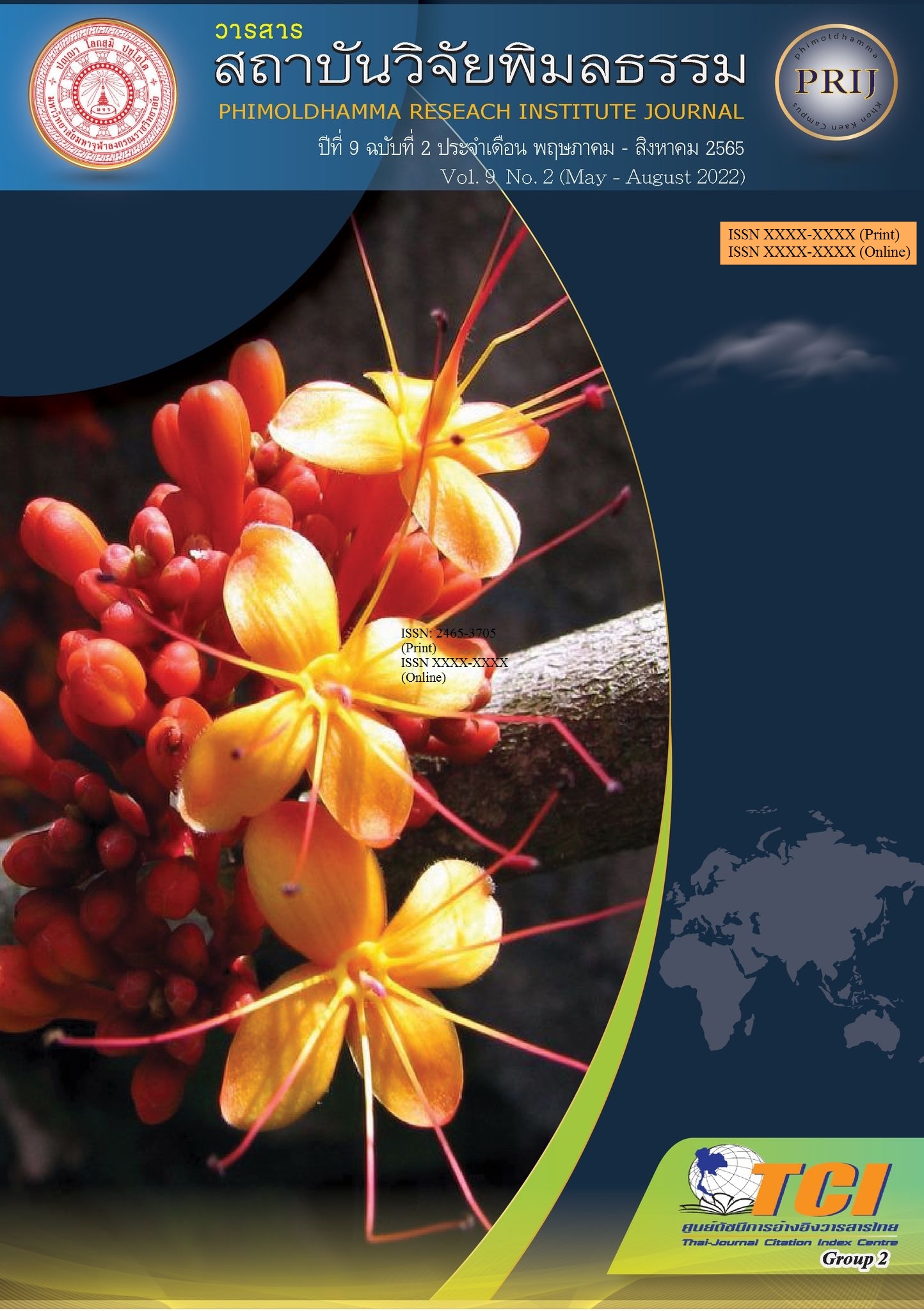Analytical Study of Dhamma Vijaya Governance of King Ashoka the Great
Keywords:
Dhammavijaya, Governance, King Ashoka the GreatAbstract
The objectives of this research ware to analytical study of Dhamma vijaya governance and to analyze the values and benefits of the Dhamma vijaya governance of King Asoka the Great. There was a qualitative research by using of a documentary research that appears in the Tripitaka, commentary, supreme supplications, textbooks and academic writings on Buddhism and analyze descriptive data.
The result was as follows:
1. King Asoka the Great adopted the principles of governance and Buddhist concepts as a means of governing to create legitimacy and maintain the power and stability of governance. By relying on the principles of Buddhism as the main idea of governing the country focus on practice by bringing the aforementioned principles into practice, propagating and teaching the general public.
2. King Asoka the Great ruled the country by Using of Dhamma Vijaya principle for governance. Ruling the People as fathers ruling their children or ruling the land with righteousness. Build a stone inscription for communication to enhance the Dharma as state's policy to allow local administrative administrators to teach the people. To
appointed an ambassador of Dharma in propagating the Dharma and going to all Buddhist places for study and practice Dharma.
3. The values and benefits of Dhamma Vijaya governance as King Asoka the Great adopted the principles of governance towards the patriarchy, which was to rule the people's kingdom like a father and son and ruled the land with righteousness and supported people to educate investigated and propagated Dhamma by himself which gave rise to a royal tradition which every king has followed in his footsteps.
References
จำนงค์ ทองประเสริฐ. (2539). ปรัชญาประยุกต์-อินเดีย. (พิมพ์ครั้งที่ 2). กรุงเทพฯ: เอช.เอ็น.กรุ๊ป.
_______. (2539). พระพุทธศาสนา สังคม และการเมือง. (พิมพ์ครั้งที่ 2). กรุงเทพฯ: คอมแพคท์พริ้นท์.
เช็ค ติงซานชาลี. (2556). สุดยอดสถานที่รำลึกถึงพระพุทธองค์ในอินเดีย-เนปาล. นนทบุรี: พิพิธภัณฑ์.
บริษัท พาโนรามา เวิลด์ไวด์ จำกัด. (2549). ตามรอยพระพุทธเจ้า. กรุงเทพฯ: แพรว.
พระพรหมคุณาภรณ์. (2552). จารึกอโศก (ธรรมจักรบนเศียรสี่สิงห์) รัฐศาสตร์แห่งธรรมาธิปไตย. สมุทรปราการ: ผลิธัมม์.
_______. (2554). การปฏิบัติธรรม ฉบับที่ 36. กรุงเทพฯ: ธรรมสภา.
พระมหาวุฒิชัยวชิรเมธี (ว.วชิรเมธี). (2561). อโศกมหาราช ผู้สร้างแนวคิดการเมืองใหม่. เข้าถึงได้จาก http://www.vimuttayalaya.net/DharmaDaily.aspx?id=73&page=10
สุลักษณ์ ศิวรักษ์ (ส. ศิวรักษ์). (2537). ความเข้าใจในเรื่องพระเจ้าอโศก และอโศกาวทาน. (พิมพ์ครั้งที่ 2). กรุงเทพฯ: ศูนย์ไทย-ธิเบต.





